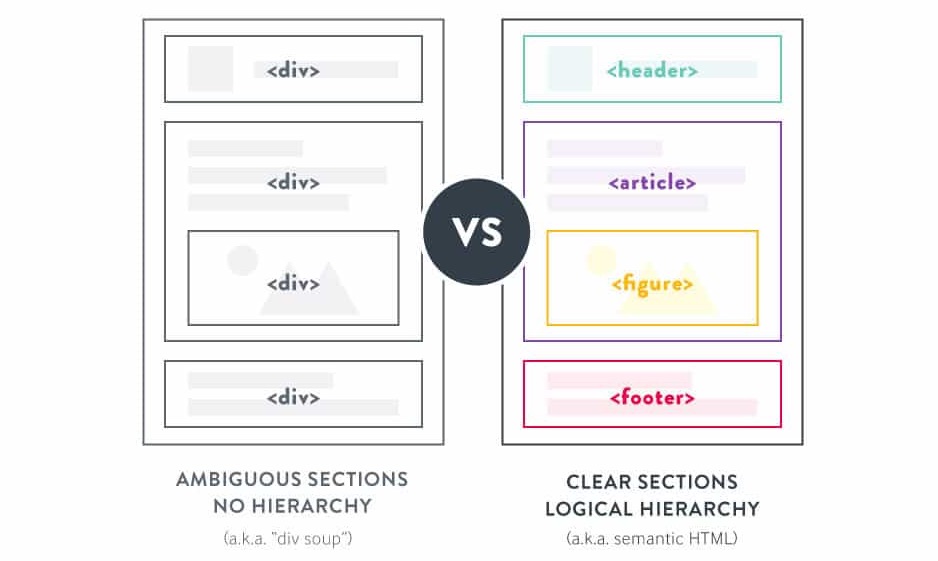Semantics
The markup of a web page should make sense, like a newspaper or magazine page. The page has sections, headings, lists, images, text paragraphs, etc. To describe all this abundance of content types, there are relevant tags. That is, though semantics are originally part of HTML, they are useless if implemented incorrectly.
Semantic markup is an approach to creating HTML markup based on the use of tags according to their outlined purpose in the specification, which is suitable for the type of marked up content.

In most cases, semantic markup is just common sense. When marking up a text
paragraph, we use the <p> tag; to mark up links, we use the <a> tag; content
images have the <img> tag, etc.
That is, semantic markup means that tags are not selected based on how they are displayed in the browser, but rather based on the type and structure of the content being marked up.